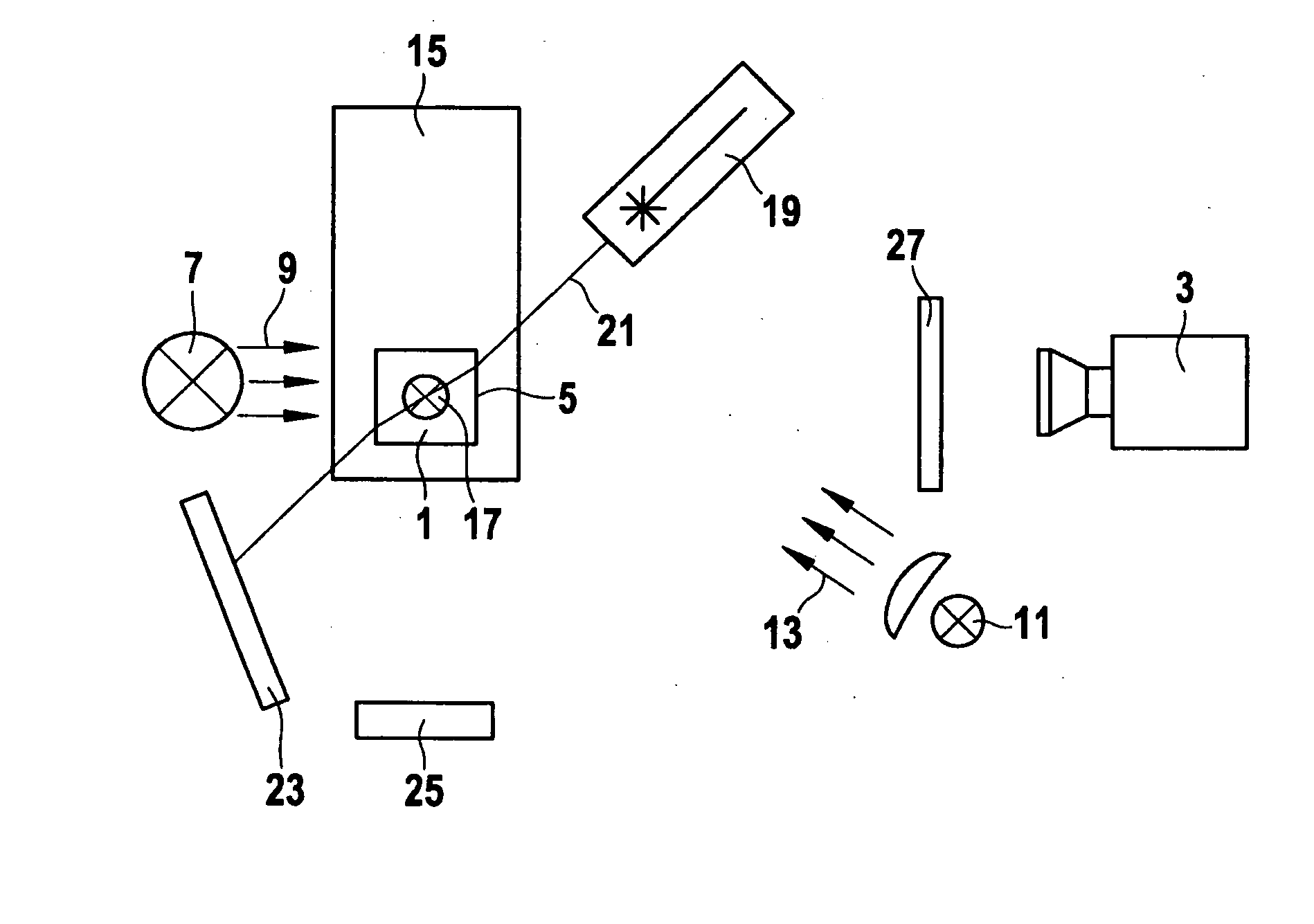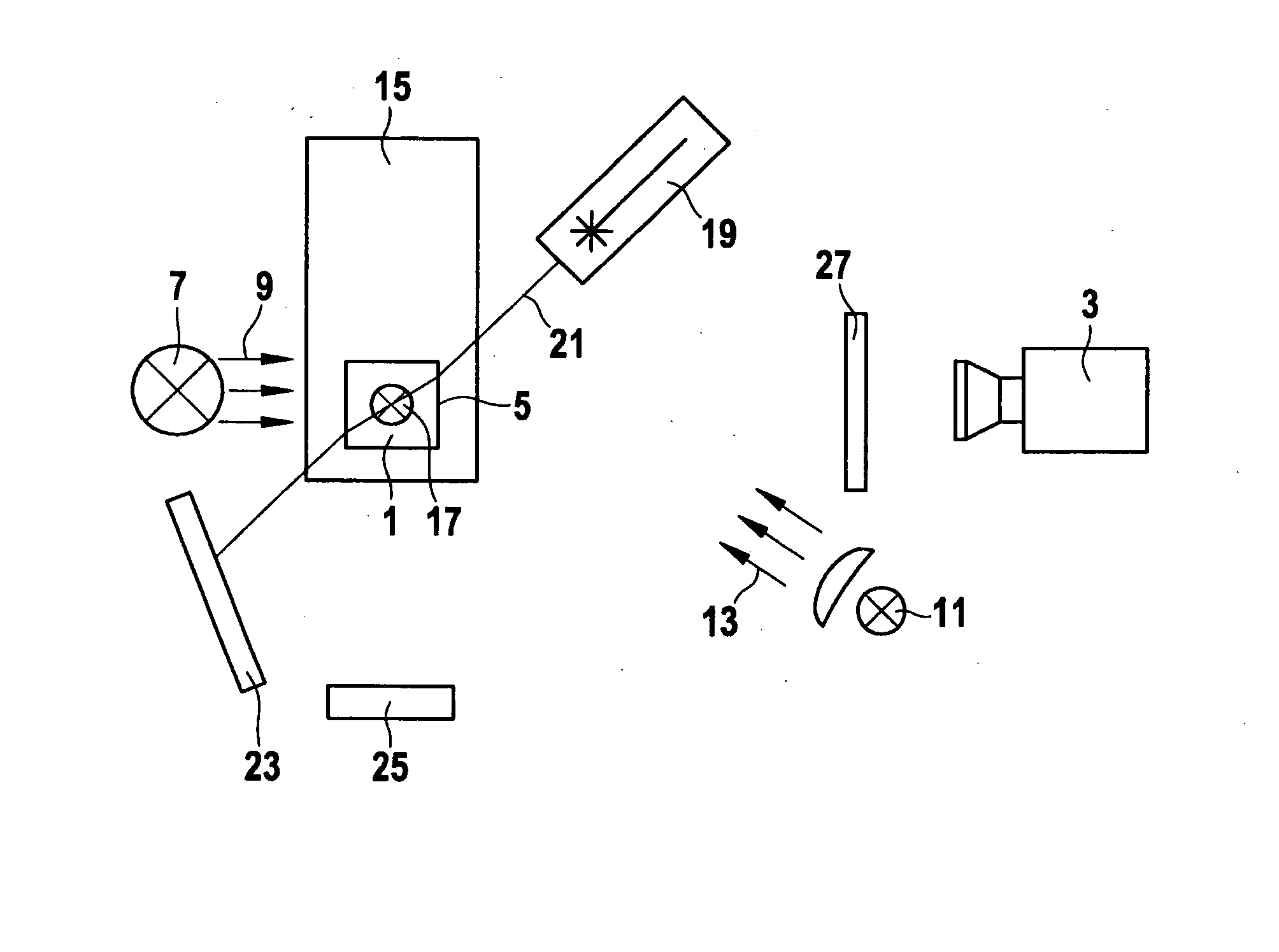Device for optical characterization
a technology of optical characterization and sample, applied in the field of optical characterization samples, can solve the problems of inability to find and use the sensors for measuring properties which change over the spatial extension of the sample, and the failure of the spot sensors used for adsorption reflection measurement in particular, so as to achieve the effect of increasing the quality of measurement and achieving higher spectral separation
- Summary
- Abstract
- Description
- Claims
- Application Information
AI Technical Summary
Benefits of technology
Problems solved by technology
Method used
Image
Examples
Embodiment Construction
[0024]A schematic top view of a device implemented according to the present invention for the optical characterization of samples is shown in the single FIGURE.
[0025]A sample 1 is recorded by a camera 3 for the optical characterization. Sample 1 is generally a liquid which is accommodated in a receptacle container 5. Receptacle container 5 may be a cuvette, for example. To be able to optically characterize sample 1, it is necessary for receptacle container 5 to be transparent to radiation in the required wavelengths. The receptacle container may be manufactured from an amorphous plastic, such as PMMA, or also from glass or quartz glass, for example.
[0026]A first light source 7 is situated in such a way that sample 1 is transilluminated opposite to the viewing direction of camera 3. The emitted light of first light source 7 is shown by arrows 9. Sample 1 is transilluminated by first light source 7. For example, the spatial distribution inside the sample may be determined in the trans...
PUM
 Login to View More
Login to View More Abstract
Description
Claims
Application Information
 Login to View More
Login to View More - R&D
- Intellectual Property
- Life Sciences
- Materials
- Tech Scout
- Unparalleled Data Quality
- Higher Quality Content
- 60% Fewer Hallucinations
Browse by: Latest US Patents, China's latest patents, Technical Efficacy Thesaurus, Application Domain, Technology Topic, Popular Technical Reports.
© 2025 PatSnap. All rights reserved.Legal|Privacy policy|Modern Slavery Act Transparency Statement|Sitemap|About US| Contact US: help@patsnap.com


